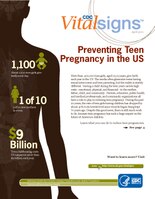
Photo from wikipedia
Background: The associations between levels of pregnancy intention and adverse behaviors or experiences during pregnancy and postpartum have not been well described. Materials and Methods: We used 2018 Pregnancy Risk… Click to show full abstract
Background: The associations between levels of pregnancy intention and adverse behaviors or experiences during pregnancy and postpartum have not been well described. Materials and Methods: We used 2018 Pregnancy Risk Assessment Monitoring System data from 31 jurisdictions in the United States (n = 32,777) to estimate prevalence of inadequate prenatal care (PNC), inappropriate gestational weight gain, depression during pregnancy, intimate partner violence (IPV) during pregnancy, third trimester smoking, no breastfeeding, no postpartum visit, postpartum depressive symptoms, and postpartum smoking by categories of pregnancy intention: unwanted, ambivalent (i.e., unsure), mistimed (i.e., wanted later), or wanted (i.e., wanted then/sooner). Regression models estimated adjusted prevalence ratios (aPR) and 95% confidence intervals (CIs) of associations between pregnancy intention and maternal behaviors or experiences. Results: Approximately 16% of women reported pregnancy ambivalence. Women with pregnancy ambivalence (versus wanted pregnancies) had higher prevalence of all adverse maternal behaviors and experiences. Separate models found women with unwanted pregnancy (vs. ambivalent) had higher prevalence for depression during pregnancy (aPR: 1.40, 95% CI: 1.21-1.63), IPV (aPR: 1.75, 95% CI: 1.11-2.77), no breastfeeding (aPR: 1.22, 95% CI: 1.04-1.44), no postpartum visit (aPR: 1.28, 95% CI: 1.06-1.55), and postpartum depressive symptoms (aPR: 1.19, 95% CI: 1.00-1.42); Women with mistimed pregnancy (vs. ambivalent) had lower prevalence for inadequate PNC (aPR: 0.89, 95% CI: 0.81-0.98), third trimester smoking (aPR: 0.68, 95% CI: 0.57-0.80), no breastfeeding (aPR: 0.85, 95% CI: 0.74-0.98), and postpartum smoking (aPR: 0.83, 95% CI: 0.73-0.95). Discussion: The results emphasize the importance of recommended screening and care during the preconception, prenatal, and postpartum periods.
Journal Title: Journal of women's health
Year Published: 2021
Link to full text (if available)
Share on Social Media: Sign Up to like & get
recommendations!